.jpg)
Peugeot 508 Hybrid Review
.jpg)
Introduction
Peugeot isn’t known for its design flair, but the company is now making some of the best-looking cars on sale today. The 2008, 3008 and 5008 SUVs all look great, as does the new 208 hatchback. The next-generation 308 is also a looker, but the 508 is the real star of the show. Faced with some capable premium rivals, Peugeot has managed to make its unloved four-door saloon into a seriously sexy fastback.
Now, that pretty face is backed up with an ultra-modern plug-in hybrid powertrain that allows you to use electric power for short trips into town and a 1.6-litre petrol engine for longer journeys. As with all plug-in hybrids, you need the right lifestyle to get the most from the 508 Hybrid, but low tax rates mean it’s going to appeal to company car drivers whatever their life looks like. So the question is, just how good is it?
Review Sections
Select's rating score* - 3.7 / 5
At a Glance
Although style will always be one of the 508’s big draws, it’s a very competent family fastback. It’s sexier than a VW Passat or a Skoda Octavia, and it’s just as good to drive. Now it comes with hybrid power, it also makes a compelling case for itself as a comfortable, handsome company car.
Hybrid customers get to enjoy almost the full gamut of 508 models, except for the basic Active Premium model. But let’s face it, you didn’t want that version anyway. That means the Allure is the entry-level option, giving you navigation, parking sensors and a reversing camera, as well as smartphone connectivity and 17-inch alloy wheels.
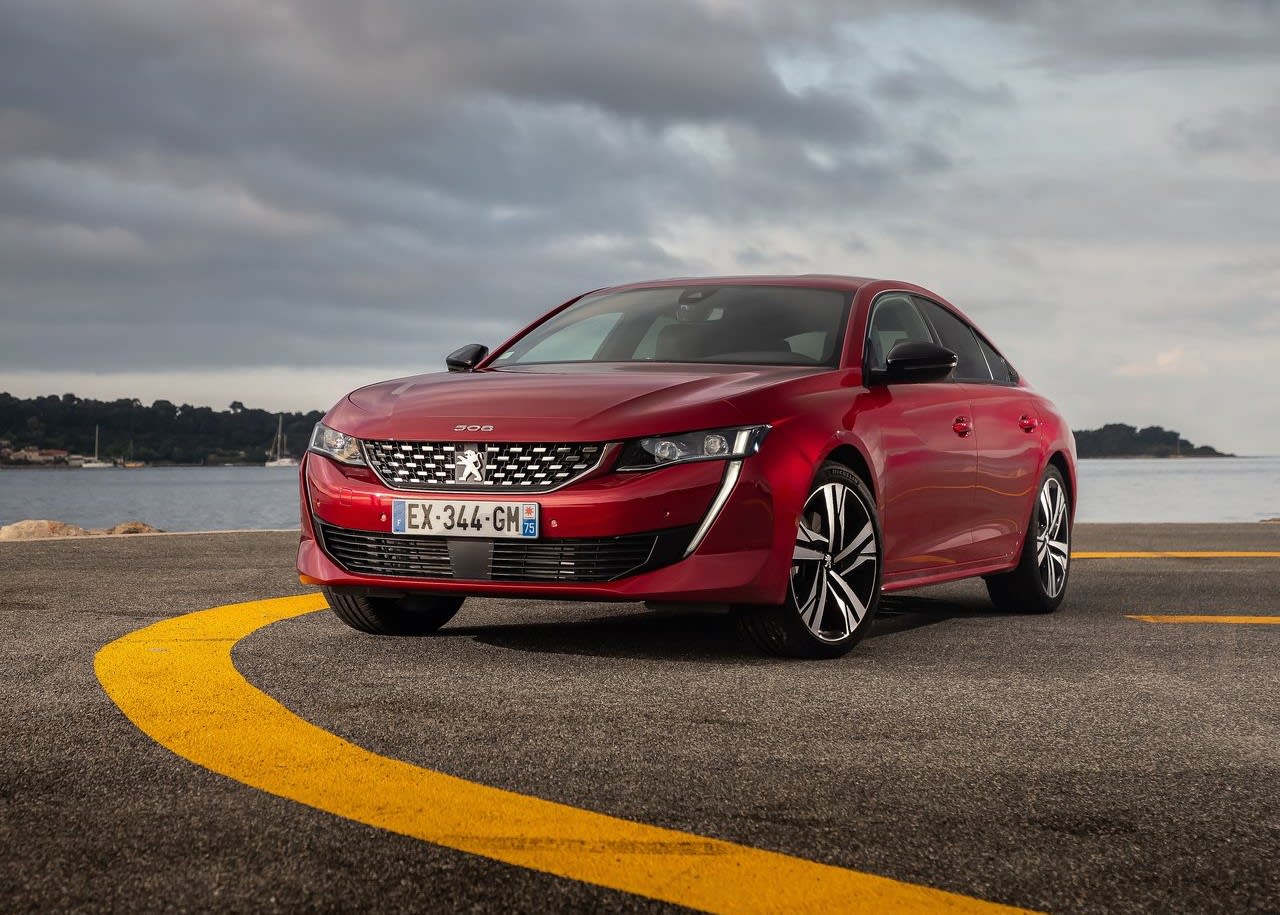
Moving up to Allure Premium gets you a handful of extra goodies, but things really get serious with the GT model, which comes with sporty design features and 18-inch alloys, as well as full LED headlights and part-leather(-effect) upholstery. The GT Premium is the daddy, however, providing an improved camera system, better seats and a high-end Focal hi-fi.
Key Features
Although Peugeot’s technology has traditionally been a weak spot, the 508’s biggest boon is found in the digital instrument display in front of the driver. With a number of different displays to choose from, it gives you the opportunity to find whatever works for you, and it houses a lot of the on-board tech.
Sure, you’ll find your favourite display in the first week and seldom change, but it’s nice to have the option of conventional(ish) dials, a display that shows you how the hybrid system is operating and a navigation display. Alternatively, you could opt for a display that shows you what the on-board safety technology is up to, and if you’ve specified the right gizmos, you can even have a night vision display that uses infra-red cameras to ‘see’ into the night.
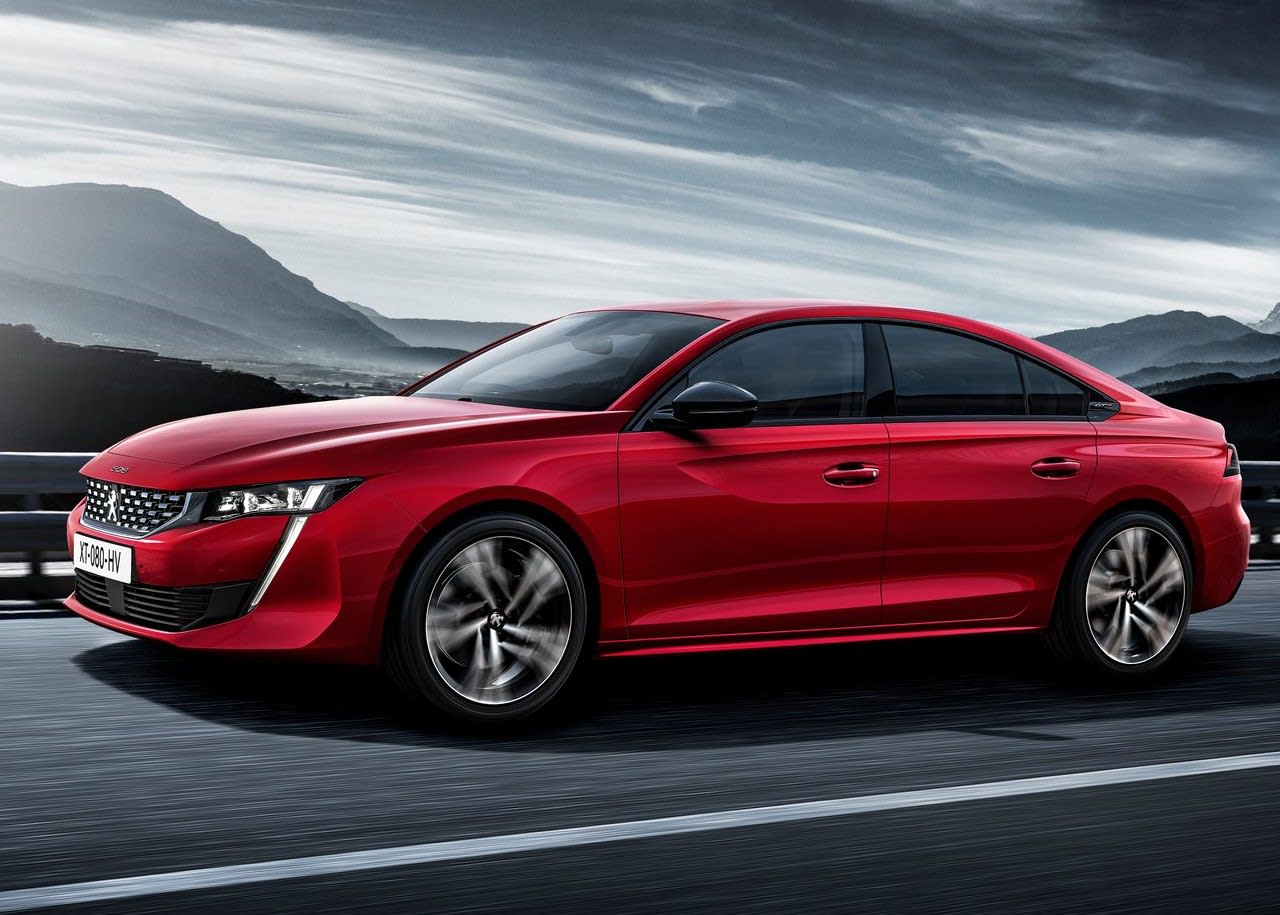
Slightly more left-field (yet still somehow more conventional) is the tiny steering wheel, which has become a feature among modern Peugeots. It doesn’t suit the SUVs very well, but it works in the slightly sportier 308 and 508 models. It never makes the 508 feel more agile than it is, but it does help to make the cabin feel more modern and more cockpit-esque.
Performance & Drive
Peugeot’s hybrid powertrain essentially combines a 1.6-litre turbocharged petrol engine with an electric motor, both of which send their power to the front wheels via an eight-speed automatic gearbox. In total, that means you get 225hp – enough for a 0-62mph time of around 8.5 seconds and a top speed of 155mph.
Even if you only use the electric motor, which churns out 181hp all on its own, you’ll get up to 84mph before the petrol engine has to kick in. But the real advantage of this powertrain is the ability to cruise around in silent, tree-hugging electric mode without having to worry too much about filling up the battery.
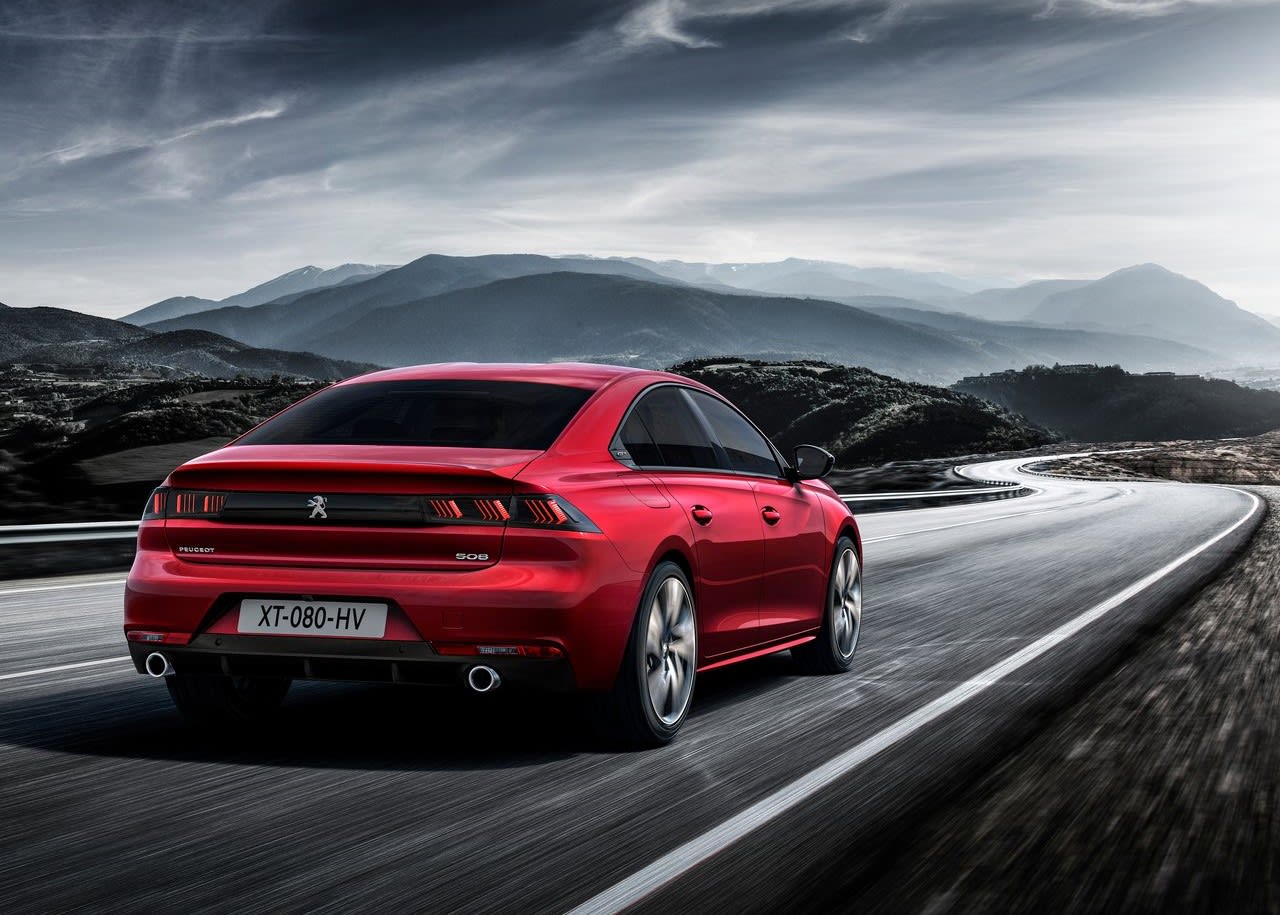
The idea is you use the electric motor in town when you’re popping to the shops or driving to work. When you come home, you charge overnight and have a full battery for tomorrow’s pottering. Then, when you’re forced to go to Scotland to visit the in-laws, you still have a petrol engine to get you there and back with only quick stops in petrol stations.
That’s how you get the most from the hybrid powertrain, but the truth is there’s something for everyone in this set-up. For starters, you get deceptively good performance. The official 0-62mph time is decent, but this thing is at its most impressive on the move. For overtaking on country roads, it’s brilliant.
But the refinement is the real surprise package. Of course, the electric motor is quiet, but the petrol engine is barely any louder. Were it not for the fact the numbers on the speed display turn from blue to white when the engine kicks in, you’d hardly know it was running. Add in a relative lack of road noise and very little wind noise even at motorway speeds, and you’ve got something very relaxing to drive.
That impression is helped by the active suspension system that’s standard on top-of-the-range GT Premium models and optional on the GT version, but is not available lower down the pecking order. In essence, the system allows the car to read the road and adapt its suspension settings, giving you a smoother ride. It works well, but the 508 wasn’t an uncomfortable car to start with, so it seems a little frivolous to us. Nevertheless, it’s a clever piece of engineering.
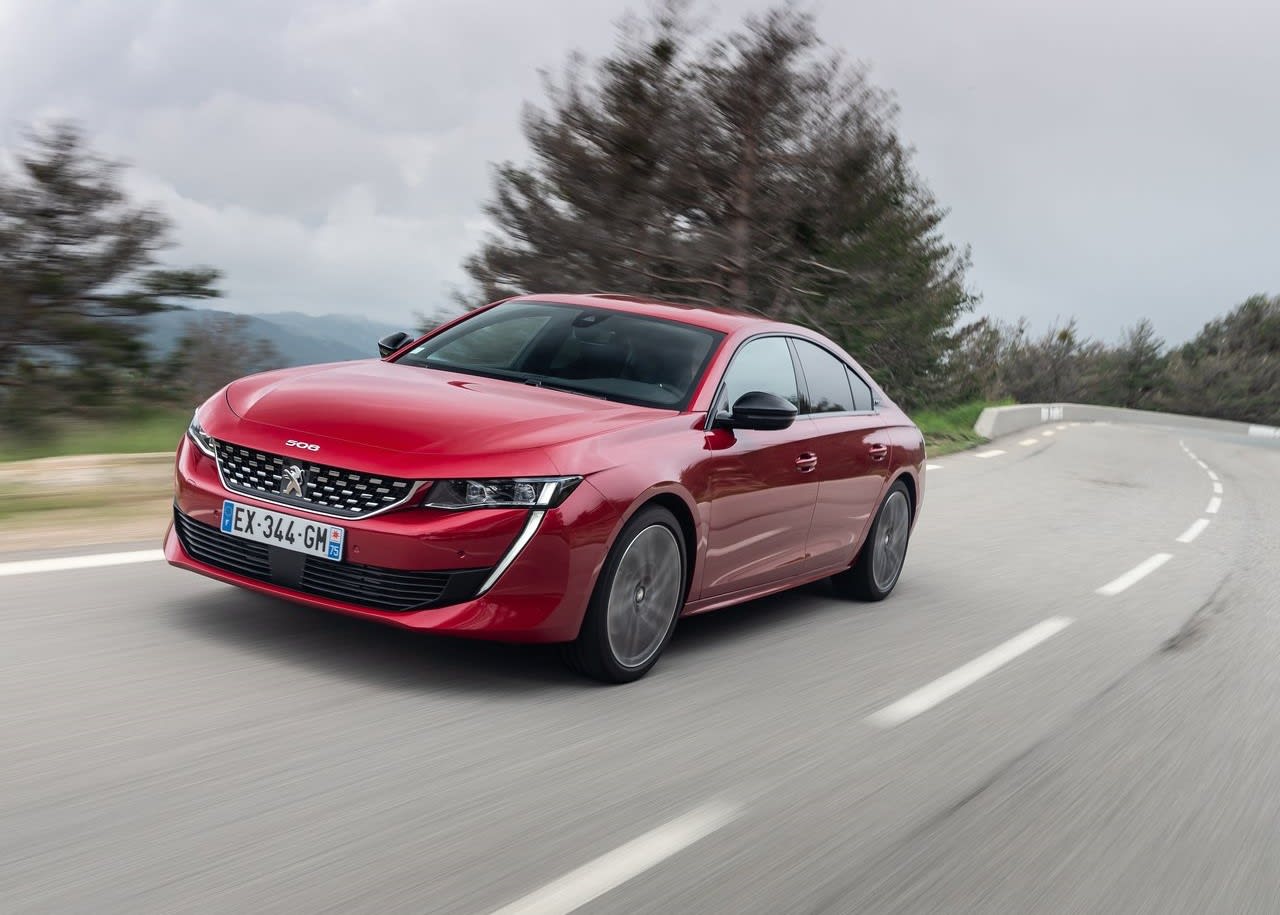
For those more interested in driving pleasure than comfort, you’ll find the 508 holds its own with front-wheel-drive rivals such as the Skoda Octavia iV and Volkswagen Passat GTE. But alongside the fabulous BMW 3 Series or the Mercedes-Benz C-Class, and it doesn’t quite have that sense of balance afforded by a rear-wheel-drive chassis.
That said, it has plenty of grip and it doesn’t roll too much, which is very good news – particularly considering the slight softness to the suspension. There isn’t much feel through the steering wheel, which is a shame, but it responds to your commands well and the brakes are great.
The only small fly in the ointment is the regenerative braking system and gearbox seem to trip each other up slightly when you’re slowing down, making the whole car jolt occasionally. It’s rare, but it’s disconcerting when it happens.
Running costs
It’s difficult to calculate a plug-in hybrid’s fuel economy, because so much depends on how you use the car. Officially, the figures suggest you’ll manage something between 166.2 and 235.4mpg. Clearly, such figures are ridiculous – the stuff of dreams – but they are based on the supposition that owners will spend most of their lives using electric power alone.
Of course, with the recent enforced changes to our working lives, more people will suit the plug-in hybrid lifestyle, which really requires you to do short journeys around town for the vast majority of the time. If you live in the suburbs and commute or just run a few errands a day, then charge the car overnight, you might find yourself getting closer to the three-figure economy. Especially if you only do the occasional long-distance drive.
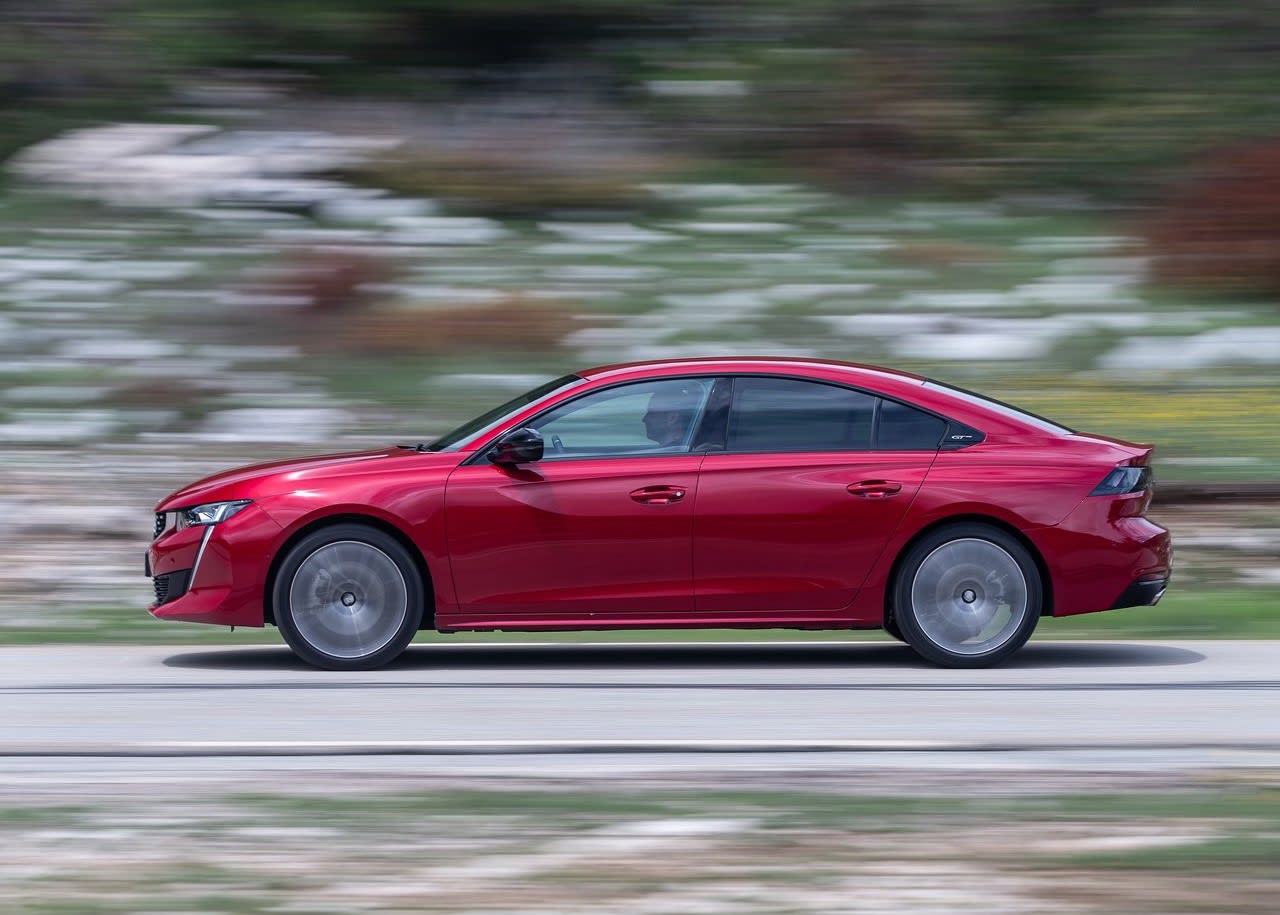
Get out on one of those runs and you’ll probably see the 1.6-litre petrol engine sip fuel at quite a dignified rate, but it won’t be as parsimonious as the 1.5-litre diesel. If you almost exclusively drive long distances, diesel will still be the fuel for you.
Stick to urban miles, though, and the claimed range of between 33 and 39 miles will cover you for most eventualities. Don’t expect a full 30-odd miles of zero-emission driving, however. With creature comforts such as air conditioning and a radio in play, something in the mid-20s is probably more realistic.
Emissions
Thankfully, the government hasn’t really cottoned onto the fact plug-in hybrids are only efficient if they suit your lifestyle. So the claimed carbon dioxide emissions of between 29 and 38 grams per kilometre are true for everyone. That means the company car tax bill for a 508 Hybrid will be almost laughably low, at 11% in the 2021/22 financial year.
Even the diesel-powered 508 only manages emissions of 115-138g/km, so the Hybrid is streets ahead of its siblings when it comes to company car tax. It’s also the cheapest when it comes to vehicle excise duty, or road tax, although that won’t matter very much to you because you’re leasing, and road tax is included in the lease price.
Interior
The 508’s stylish exterior is matched by an equally attractive cabin. The high centre console blends into the dashboard, where a big touchscreen dominates everything. That’s probably because it does everything, with switches for the climate control, hybrid system and vehicle settings all hidden away in the screen. It isn’t the most ergonomic set-up in the world, but it does make for a clean, modern cabin.
For the driver, meanwhile, there’s no escaping the double whammy of tiny steering wheel and high-set digital instrument cluster. Both work quite well in aesthetic terms, although they don’t really evoke the ‘go-kart’ sense of fun Peugeot claims to have been aiming for. The seats are better, with lovely stitching for the leather-wrapped pews and sculpted frames that support you in all the right places.
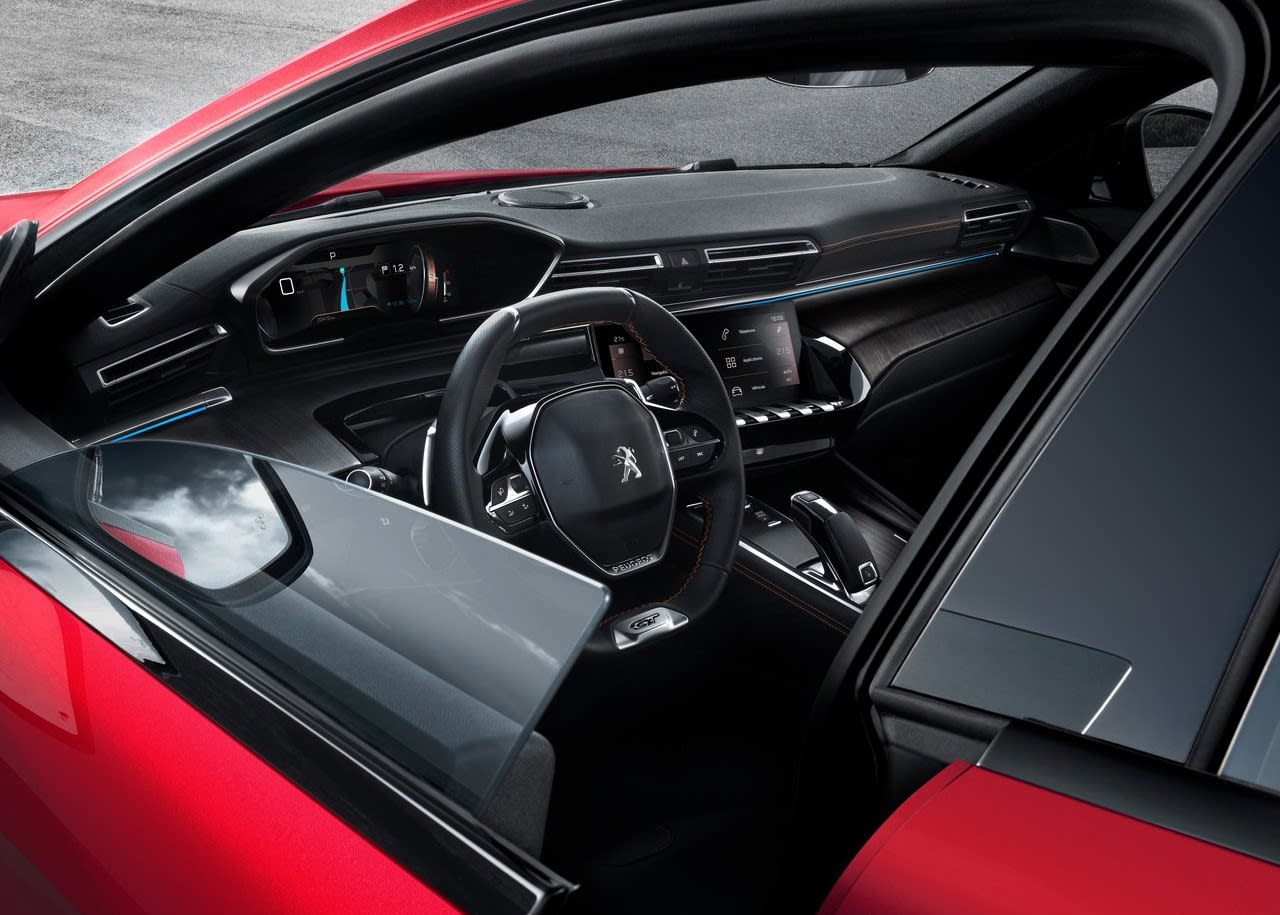
A few ergonomic aspects aren’t quite so good, though. The cruise control is hidden on a funny stalk behind the steering wheel, for example, and that makes it a bit tricky to operate until you’ve learned how it works. You can’t even see the buttons without dipping your head below the steering column.
The buttons on the steering wheel are similarly awkward, with the switches on the left operating the digital instrument display while those on the right operate the media system. Or at least most of them do. It probably seemed quite logical back at the factory in France, where the car was designed with the steering wheel on the left. But here in the UK it all feels a bit odd.
But while the ergonomics might be typically French, the build quality is nothing of the sort. Peugeot has come on in leaps and bounds of late, and the 508 feels every bit as solid as a Ford Mondeo. Some of the materials might be a little cheap, but everything feels as though it was bolted together by professional engineers, rather than marketing people who’ve just got back from a long lunch at a local vineyard.
Technology
The 508 puts quite a lot of emphasis on on-board technology, which is a shame because technology is not a traditional Peugeot strong suit. In many ways, the 508 continues this trend with a sluggish touchscreen with blocky, old-school graphics and a bang average navigation system. The French company also insists on hiding the climate control buttons in the touchscreen, and that makes life a misery on a cold morning when the screen is still coming to life.
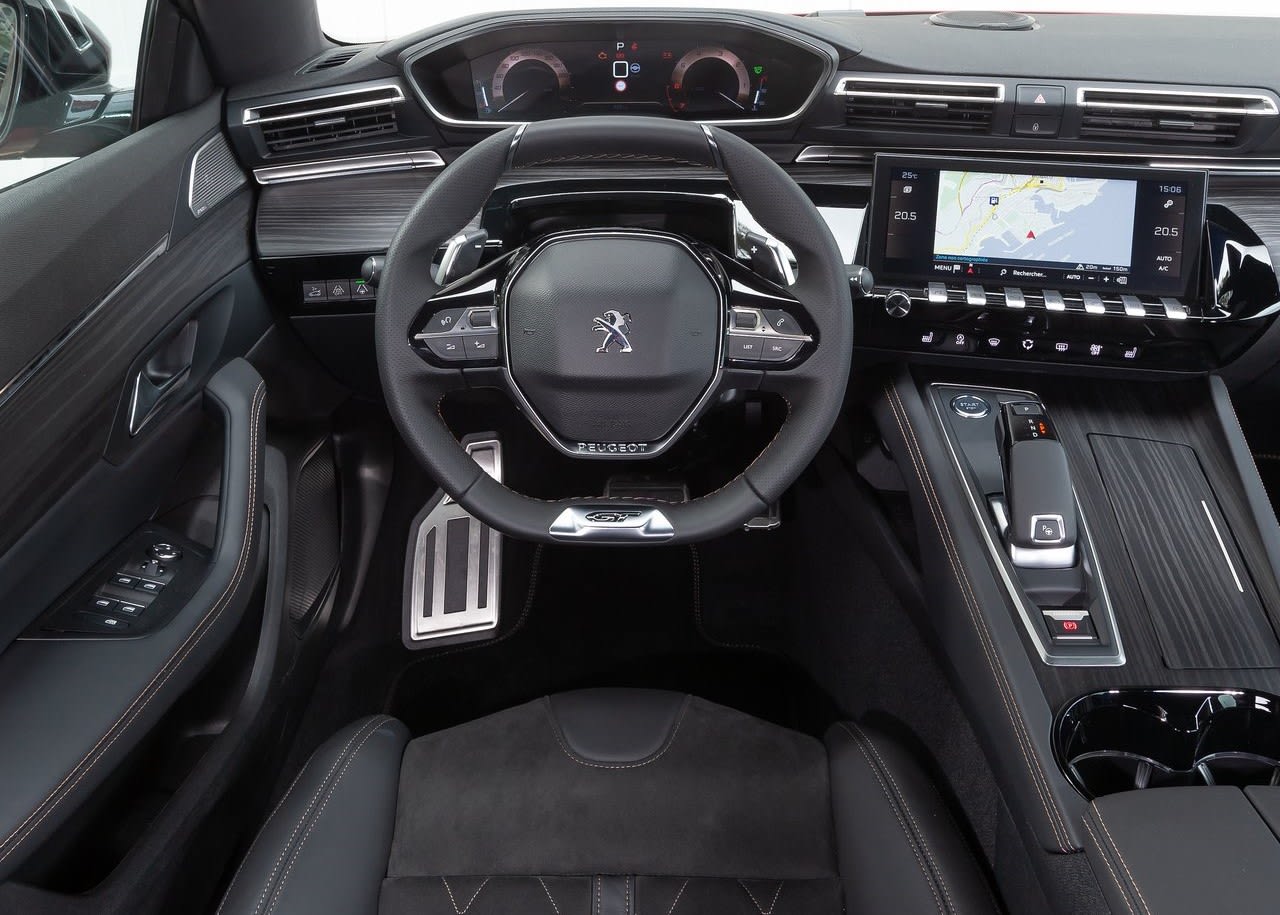
For once, though, that’s the whining out of the way. Everything else is good. Android Auto and Apple CarPlay are standard features that make the infotainment system much easier to live with, as well as giving you access to some of your phone’s technology. And the digital instrument cluster is brilliant, offering you clear information and a wealth of personalisation options that allow you to set it up just how you want it.
You get wireless phone charging, too, although the cubby hole is hidden behind the dashboard and it isn’t particularly easy to access. It’s also far too easy to leave your phone behind when you leave the car parked in a particularly rough area of town. But when you’re on the move and your phone is plugged in, top-spec GT Premium models allow you access to the Focal hi-fi system, which is very good. The standard system is fine, but the upgraded audio equipment does feel a little more upmarket.
Practicality & Boot Space
The good news is that you don’t suffer for choosing the 508 Hybrid over a conventional petrol- or diesel-powered 508. The boot is still just as capacious, at 487 litres, and that’s really as big as you’ll ever need it to be. That’s only slightly less than you’ll find in the back of an Octavia, although a Passat GTE saloon will have a little more space. That said, the 508 is a hatchback, so the boot opening is bigger and that makes the boot a little more user-friendly.
Further forward, though, the 508 is less impressive. There’s bags of space for the driver and front-seat passenger, but the rear passenger space is a bit less cavernous. Tall passengers will struggle for headroom back there thanks to the sloping roof line, and although legroom is perfectly acceptable, it isn’t what you’d call generous. Still, those shorter than about 5ft 9in will find the rear seats perfectly commodious, and kids will be very happy with their lot back there.
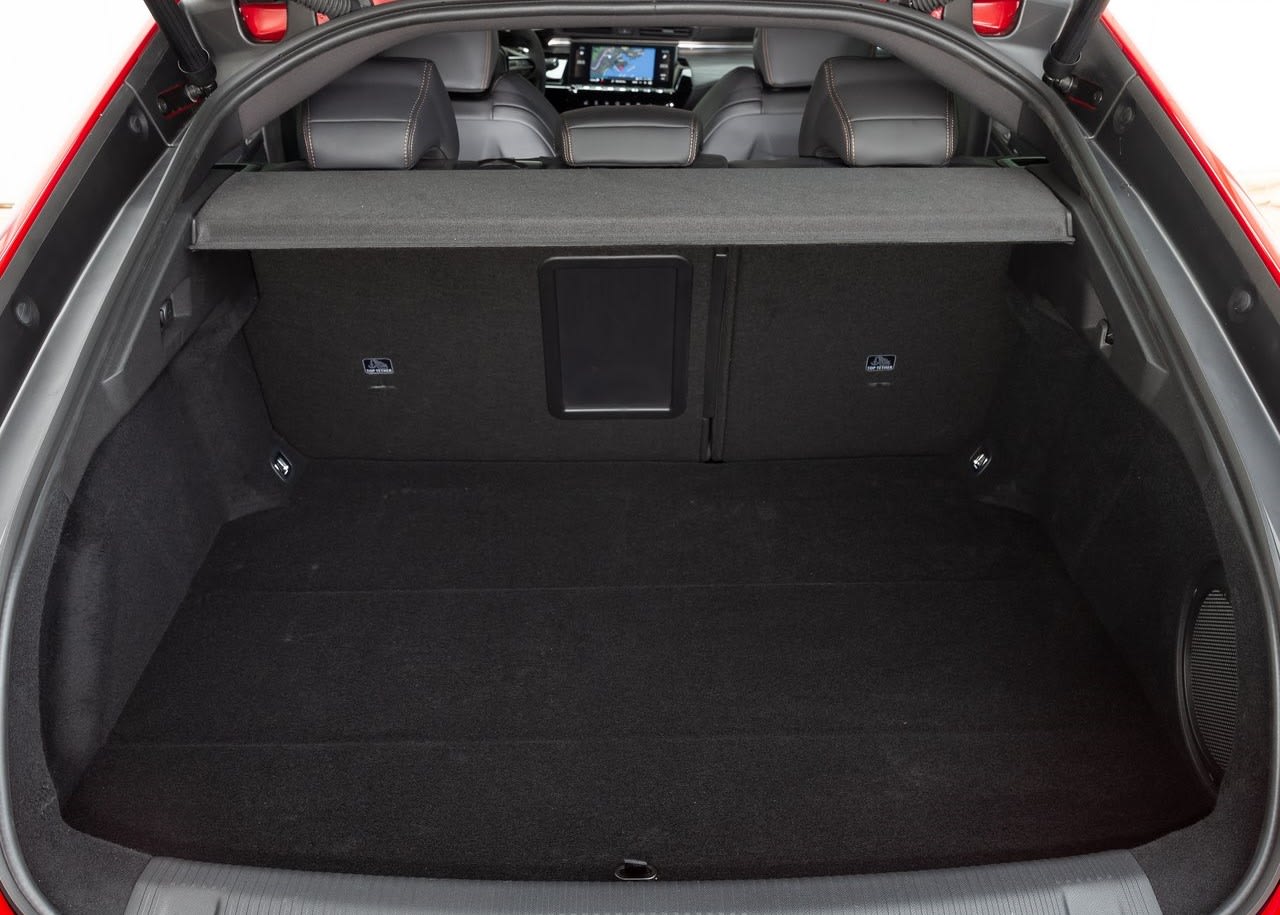
Safety
The 508 is among the safest cars in its class, thanks to a five-star Euro NCAP crash test rating. These days, such a score doesn’t mean all that much – most modern cars are very safe and will achieve four or five stars when they’re tested – but the 508’s stellar performance in terms of occupant protection should be highlighted.
It also comes with plenty of safety equipment as standard, which might ease the concerns of those who fear falling victim to the idiots found at three-figure speeds in the outside lane of the M40. Every 508 Hybrid comes with autonomous emergency braking, lane-keeping assistance and blind-spot monitoring. Essentially, the car can stop itself if the driver doesn’t respond to an oncoming hazard, and it’ll tell you when you’re drifting out of your lane or there’s a car in the blind spot over your shoulder.
More luxurious versions also get an adaptive cruise control system that can maintain a safe distance to the car in front, and there’s a lane positioning assistance system that helps keep you in your lane on the motorway. Working together, the systems can be used to reduce the workload on long drives, but don’t confuse this with driverless technology; the driver always has to keep control of the car.
You can also have your 508 with a night vision camera, which uses infra-red technology to ‘see’ further into the gloom than your headlights can penetrate. A grainy image in the digital instrument cluster renders this technology less useful than it might otherwise be, and you do spend rather too long looking at it, rather than the road.
Options
Customers choosing a 508 Hybrid get almost a free run at the whole 508 range, with only the basic Active Premium missing out on hybrid power. That means the range kicks off with the Allure, giving you 17-inch alloy wheels, part leather(-effect) seats and a 10-inch touchscreen infotainment system with satellite navigation. All that comes in addition to the usual 508 stuff, including a digital instrument cluster, parking sensors all round and a reversing camera.
Moving up to the Allure Premium gets you two rear USB sockets, electric seat adjustment and some extra safety tech, as well as a ‘smart’ electric tailgate that can be opened by swinging a foot under the rear bumper.
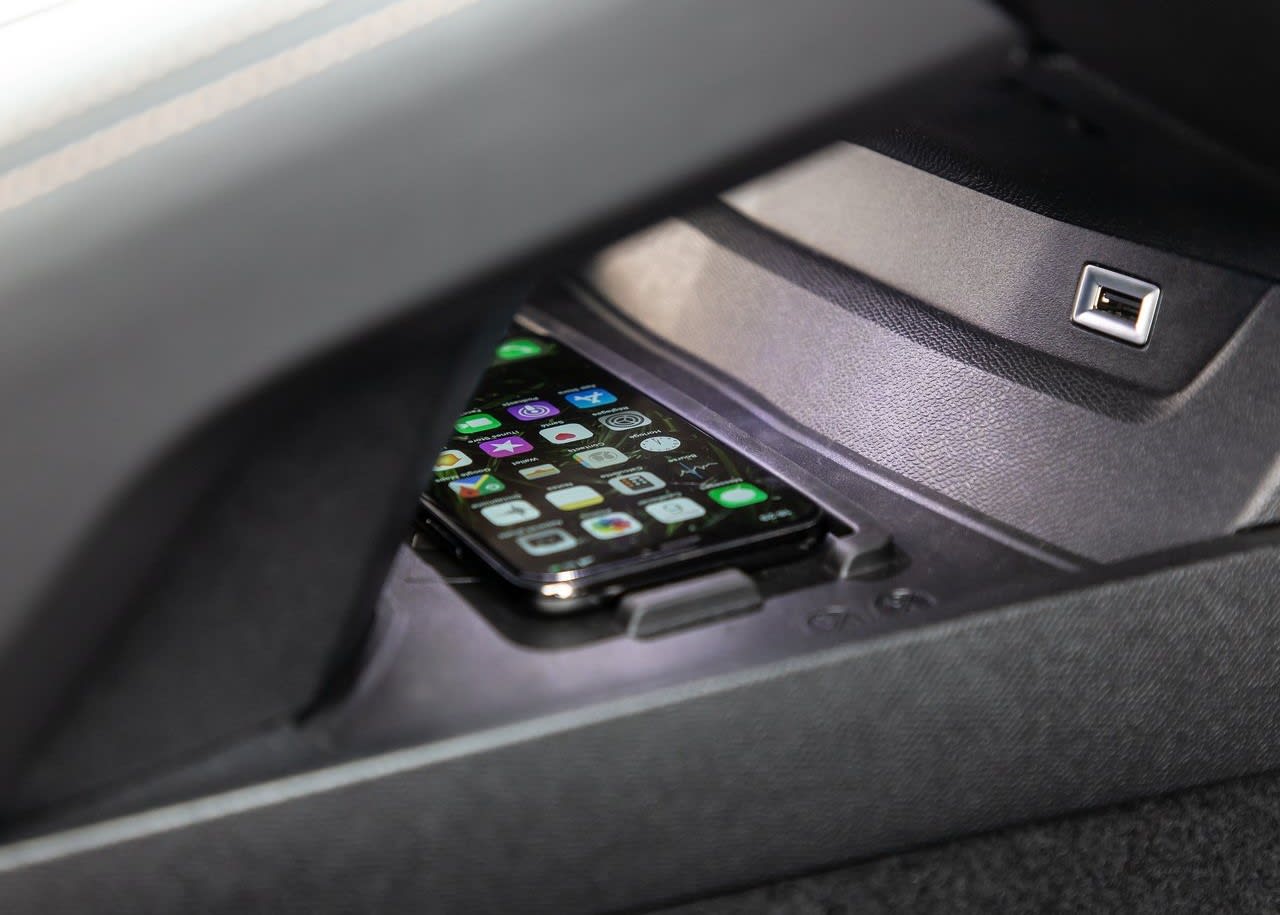
Things get a bit more impressive with the GT model, which comes with black roof lining, 18-inch alloy wheels and a sportier grille, plus full LED headlights and tail lights that ignite with a “welcome sequence” when you unlock the doors.
Finally, GT Premium trim crowns the line-up with the clever active suspension we mentioned earlier, plus full parking assistance technology, a Focal premium audio system and heated front seats. There’s part-faux leather, part-Alcantara upholstery, too, and you get auto-dimming door mirrors.
A handful of options will prove rather appealing, including the active suspension, although is only available on GT models and the loftier GT Premium, which comes with that technology as standard. The Visio Park upgraded camera and parking assistance might also appeal, while we’d be very tempted to specify the full leather upholstery and the big glass roof.
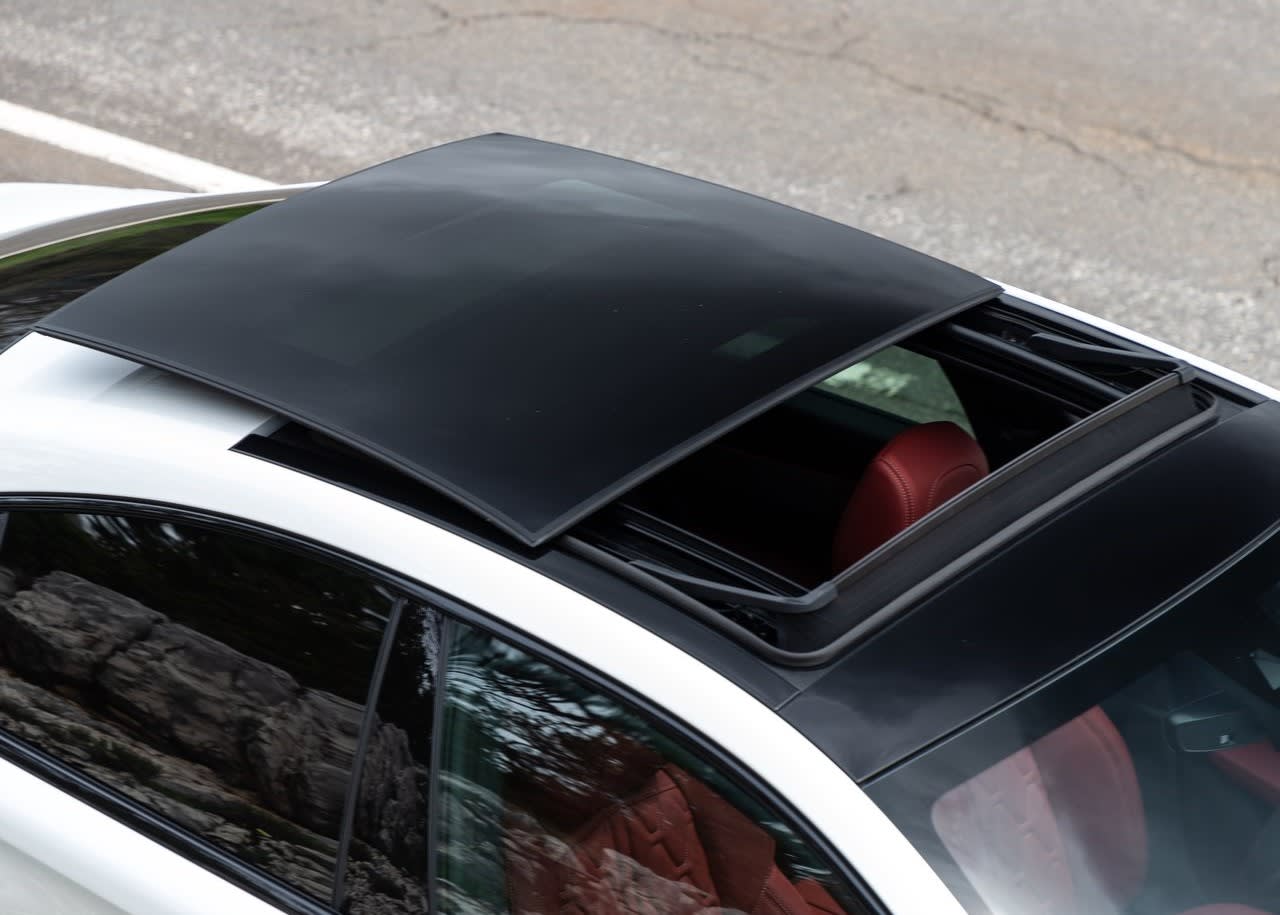
One option we definitely wouldn’t pick, however, is the night vision camera, which has to be one of the biggest gimmicks fitted to a car in recent years. Yes, it’s cool to see the world race by in monotone grey in the instrument binnacle, but you’ll quickly tire of switching it on and you’ll very quickly realise it doesn’t make life any safer on a dark country lane. In fact, it just means you spend more time looking down.
Rival Cars
The standard 508’s competition comes from a host of models, including the Mazda6 and Ford Mondeo, but plug-in hybrid rivals are less common. Of course, there’s the very capable but slightly austere VW Passat GTE and the very spacious but also slightly austere Skoda Octavia iV, but that’s about it. The four-door saloon is a dying breed among mainstream car makers, but it’s alive and kicking in the premium segment.
Which means the 508’s biggest problems are found across the border in Germany. Here, the French fastback has to compete with the BMW 330e and Mercedes-Benz C 300e. Audi hasn’t yet put plug-in hybrid power in the A4, but rest assured such technology is probably in the pipeline.
Of course, all these cars have high list prices and are considered more upmarket than the mainstream 508, but the wonder of leasing means they can be quite competitively priced when it comes to monthly payments. And that means the Peugeot really is up against the glorious BMW 3 Series and the Mercedes-Benz C-Class, both of which are very classy products. If you want comfort, the C-Class is the pick of the two, but for keen drivers only the BMW will do.
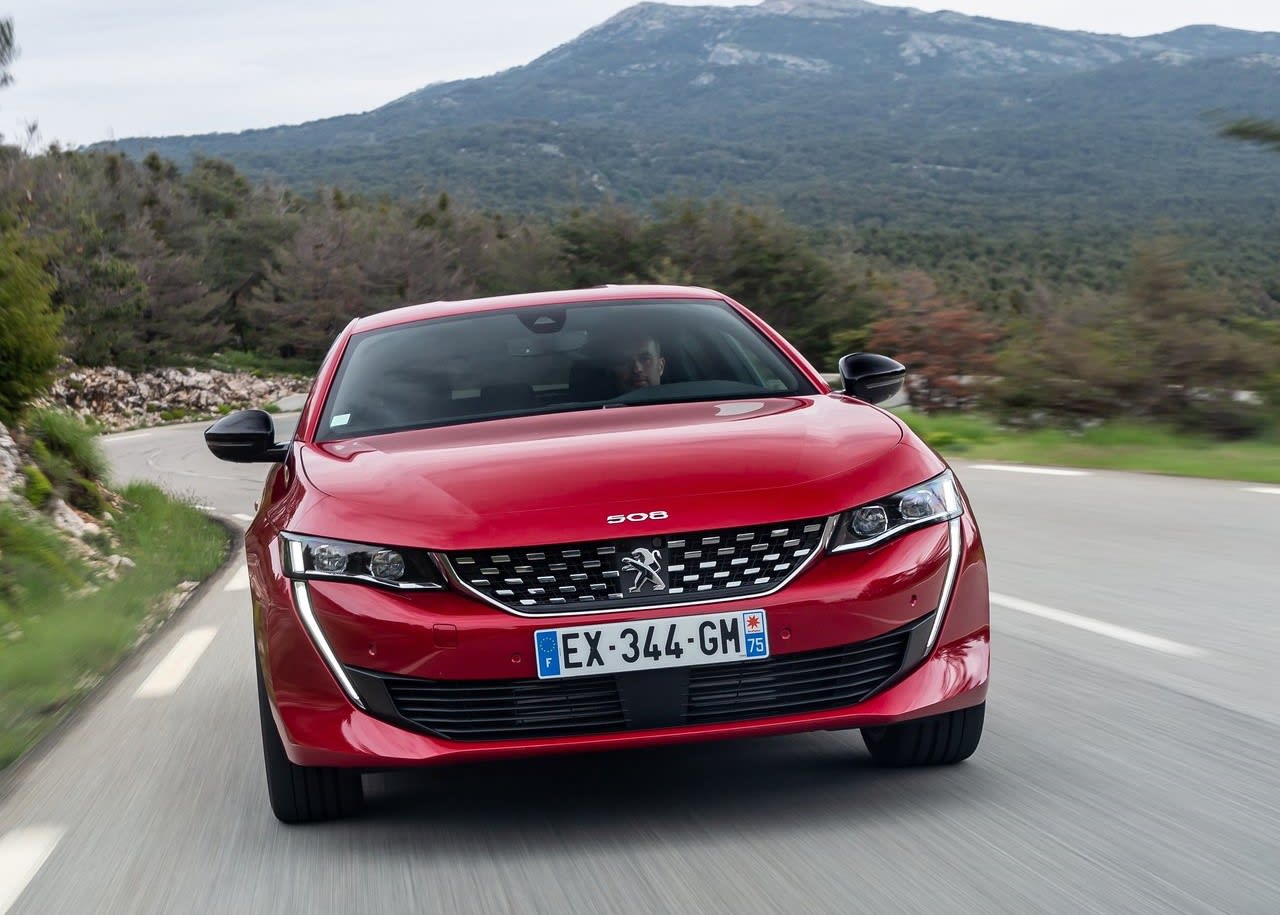
Verdict & Next Steps
In recent years, it has been difficult to recommend cars like this alongside more luxurious premium models with attractive lease rates and more desirable badges. But the 508 is such a good looking, comfortable and refined car that it’s hard to think why drivers would be so quick to dismiss such a thing.
Okay, it doesn’t have a German badge on the bonnet, but this is a capable, stylish car with a good plug-in hybrid system under the skin. As a left-field alternative to the family saloon establishment, it has to be worthy of consideration.
Where to next?
View latest Peugeot 508 Hybrid leasing deals - guide price from £366.67 per month inc VAT**
Looking for a great deal? Check out our incredible range of car lease deals
New hybrid saloon? Read our latest Reviews and find the right model for you
Want to know more about leasing? Take a look at our comprehensive Leasing Guides
Interested in everything motoring? Why not catch up on all the latest Car Leasing News.
*Score based on Select’s unique meta score analysis, taking into account the UK’s top five leading independent car website reviews of the Peugeot 508 Hybrid
**Correct as of 13/05/2021. Based on 9 months initial payment, 8,000 miles over a 48 month lease. Initial payment equivalent to 9 monthly payments or £3300.05 Ts and Cs apply. Credit is subject to status.





















